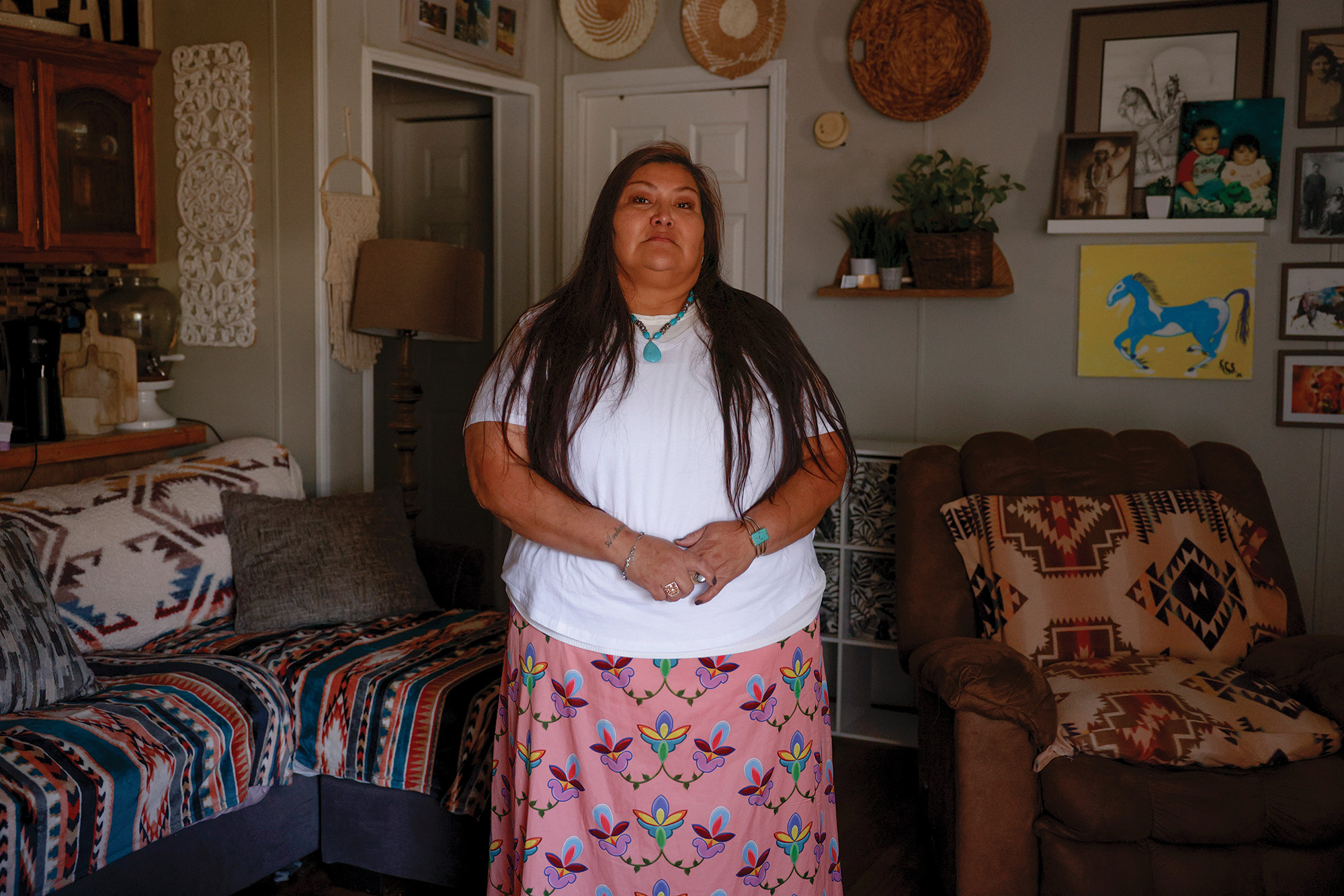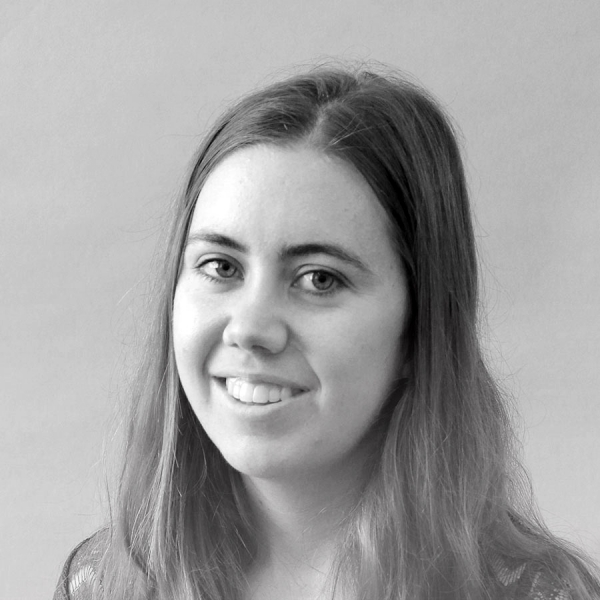Samantha Michaels wins May Sidney for Probing a Tribal Police Department and A Tragic Death
Samantha Michaels of Mother Jones wins the May Sidney Award for “A New Police Force Chased a 17-Year-Old Boy to His Death. Then It Vanished,” a deeply reported feature about a short-lived police force on the Crow reservation in Montana.
In late 2020, 17-year-old Braven Glenn was driving to visit his girlfriend on the vast Crow Indian Reservation in southern Montana. Braven signaled, passed another car legally, and resumed driving the speed limit. The car he passed happened to be driven by a police officer for the Crow Nation’s new police department. Braven wasn’t speeding when the officer called dispatch to report a speeding driver, but a chase ensued and Braven collided with an oncoming train. Witnesses say that he cried out for help but was not given medical care at the scene before he died.
The police officer had little experience as a municipal cop. She was a white Veterans Affairs security officer moonlighting on a makeshift police force assembled by the tribal chair with federal coronavirus relief funds and headquartered inside a former Subway restaurant. According to a handbook of policies for the force, which some officers testified they never saw, she shouldn’t have chased Braven. Two or three days after the crash, the police force dissolved. Braven’s family is still searching for answers.
Prior to the creation of the makeshift police force in 2020, the Crow reservation, an area nearly two-thirds the size of Connecticut, was policed by a skeleton crew of federal agents. This understaffing resulted in a lack of accountability, leaving many crimes uninvestigated and unsolved, and created a climate ripe for abuses, including racial profiling and excessive force. The Crow Nation’s inability to qualify for more federal funding to create a better trained and better resourced tribal police force (due to a lack of infrastructure, like a jail) is an example of the systemic challenges Indigenous communities face in ensuring their safety and security.
“This story draws attention to the public safety crisis facing Indigenous communities on their own lands. Tribal communities aren’t getting the support they need to protect their people,” said Sidney judge Lindsay Beyerstein. “This makeshift solution cost Braven his life.”

Backstory
Q: How did you find out about the accident and the disappearing police force?
A: I live in California, so I didn’t hear about Braven’s accident until October 2021, when I got an email from a friend of Braven’s mom, Blossom Old Bull. The friend, Emma Jane, was reaching out to journalists around the country in hopes that one of them would look into the case. She explained that the police force that chased Braven was only five months old, that it shut down shortly after his death, and that details about it were “sparse.” All these months later, she added, Blossom still didn’t have basic information about what had happened to her son. I was intrigued because I had never heard of a police department shutting down so suddenly without any public explanation. After calling Blossom and seeing how difficult it had been for her to track down answers, and how distraught she was as a result, I wanted to investigate.
Q: Have there been any developments with Braven’s family’s lawsuit?
A: The day after our article was published online, the police officer who chased Braven finally gave a short statement to the court—as far as I can tell, it was her first one in this case, which was filed in 2022. Officer Pamela Klier seemed to dispute the witnesses’ claims that Braven was crying for help and denied medical care after the crash; she said that when she approached him, Braven “was not moving, breathing, or making any noises,” and that she “saw no signs of life.” She did not specify whether she took his pulse, but added that “it was my impression that Glenn died upon impact with the train.”
A trial for the lawsuit was scheduled for June 17. This spring, Blossom asked the judge to make a final ruling in her favor without going to trial—what’s known as “summary judgment.” The defendants, represented by the federal government, also asked for a ruling in their favor. But both sides may need to wait for an answer: Earlier this month, the judge agreed to delay proceedings because the federal government’s attorney is about to go on parental leave.
Q: Why is policing so fragmented across tribal nations?
A: Though policing looks different in each tribal nation, many reservations suffer from fragmented law enforcement. Oftentimes, several agencies work alongside each other, including the federal Bureau of Indian Affairs, the FBI, the county sheriff, and tribal police. Depending on where a crime was committed, what type of crime was committed, and whether the perpetrator was Native or not, a different agency will have jurisdiction. Because it’s often unclear whether a crime took place on or off the reservation and who the perpetrator was, it’s easy for law enforcement to avoid responsibility.
The federal government is largely to blame for this confusing system, as I discovered when talking with tribal law experts and reading through old reports by the Indian Law and Order Commission, a bipartisan congressional commission. In 1885, after a Sioux government in South Dakota punished a killer with a fine rather than the death penalty, Congress passed a law that took away Native nations’ right to prosecute serious crimes like homicides committed by Native people against other Natives on reservations. Instead, lawmakers gave that power to the federal government. And in 1978, the Supreme Court also removed tribal nations’ ability to prosecute non-Natives, even for most minor crimes. A lack of federal funding for tribes makes the problem worse, because many reservations don’t have enough officers to patrol their vast territories.
Q: What is your best guess as to why the police force disappeared?
A: My best guess is that the tribal police department closed for a mix of reasons. A former BIA officer told me it shut down because of the investigation into Braven’s death. Former tribal police employees told me the department was failing even before his death because “the money stopped coming in,” which also seems plausible given what we know about the difficulties of funding tribal police. On top of that, elections may have played a role: A few weeks before Braven’s death, Crow Chairman AJ Not Afraid, who had set up the tribal police force with CARES Act funding, lost his bid for reelection. The man who replaced him, Frank White Clay, believed propping up a police force with Covid relief funding violated federal spending guidelines. The department shut down about a week before his inauguration.
But it’s impossible to know for sure why the department closed, because there was never a public explanation, and the tribal officials who might have the answer—namely Not Afraid and White Clay—did not respond to my repeated requests for comment.
Q: What did you learn from this investigation that you will carry forward to your next assignment?
A: This experience reinforced in my mind the importance of filing public records requests early, because of the time and persistence they can require, and choosing cases like Braven’s that are being litigated in court: It was through Blossom’s lawsuit that I could finally access the police dash-cam footage of the chase. Working on this project also taught me about the sensitivity that’s required when writing a story about a tribal nation as an outsider, and how helpful it can be to collaborate with local tribal members. Crow historian Alden Big Man Jr. and educator Janine Pease were among those who provided us with valuable context about the history and culture of the Crow Nation, and Crow journalist Jordynn Paz gave important insight as a cultural competency reader for the podcast and film scripts that accompanied the article.
As I move forward to other assignments, I’ll try to remember how much this investigation benefited from a multimedia approach: Working with filmmaker Mark Helenowski during the reporting process helped me write the article in a more cinematic way, which I think made it more engaging to read. And I’ll try to remember how crucial it is to incorporate self-care into each step of a multiyear project like this one—to make time for breaks, walks, stretching, etc.—because spending so long immersed in stories about trauma and grief can take a toll.
Q: Did anything unexpected happen in the course of your reporting?
A: At a certain point, because of how opaque law enforcement can be on reservations, I doubted that we would ever figure out how Braven’s chase had unfolded, and I was surprised when I finally got records and the dash-cam footage from the Bureau of Indian Affairs. I was also surprised that former tribal police chief Terrill Bracken agreed to go on camera and talk with Blossom, given how silent other officials had been with her as she pleaded for answers.
Q: Describe how you created this important piece of journalism.
A: I started this project by talking on the phone with Blossom, her kids, and Braven’s friends, to learn about who Braven was, what they knew about his death, and most crucially, what questions they still had about it. I then filed public records requests with several agencies, including the BIA, the FBI, the Treasury Department, the Veterans Affairs Department, the Big Horn County Attorney’s Office, and the Montana Highway Patrol, hoping to get answers about how the police force was run, how the chase had unfolded, and what happened afterward.
Alongside filmmaker Helenowski, I traveled twice to the reservation, where I met with a former police dispatcher who had concerns about how the tribal police operated. She gave me a tour of the old headquarters, in a closed-down Subway restaurant. I also drove to the site of Braven’s death; met with former police chief Terrill Bracken; and talked with community members about what it’s like to live on the reservation and their thoughts about crime, justice, and law enforcement. After those trips, I continued interviewing former tribal police employees over the phone. I also spoke with historians and other experts on tribal law enforcement, to try to understand the national landscape and how federal underinvestment laid the groundwork for some of the problems we see with policing on reservations today. I continued following Blossom’s lawsuit and worked with Helenowski and producer Najib Aminy to make film and podcast versions of the story.
All told, the project took about two years and involved so many talented journalists. Thank you to my editor Maddie Oatman and editors Clara Jeffery, James West, Jenny Casas, Nina Liss-Schultz, Daniel Moattar, Ruth Murai, Daniel King, and Sophie Murguia; fact-checkers Nina Wang, Henry Carnell, and Nikki Frick; producers Helenowski, Aminy, and Taki Telonidis; Reveal host Al Letson; photographer Tailyr Irvine and photo editor Mark Murrmann; art director Adam Vieyra; attorney James Chadwick; journalist Jordynn Paz, for her consultation; sound designer Jim Briggs and Fernando Arruda; production managers Steven Rascón and Zulema Cobb; and other colleagues who helped share this story after it published. I am also immensely grateful to Blossom and her family for trusting me and working with me over such a long period of time.


